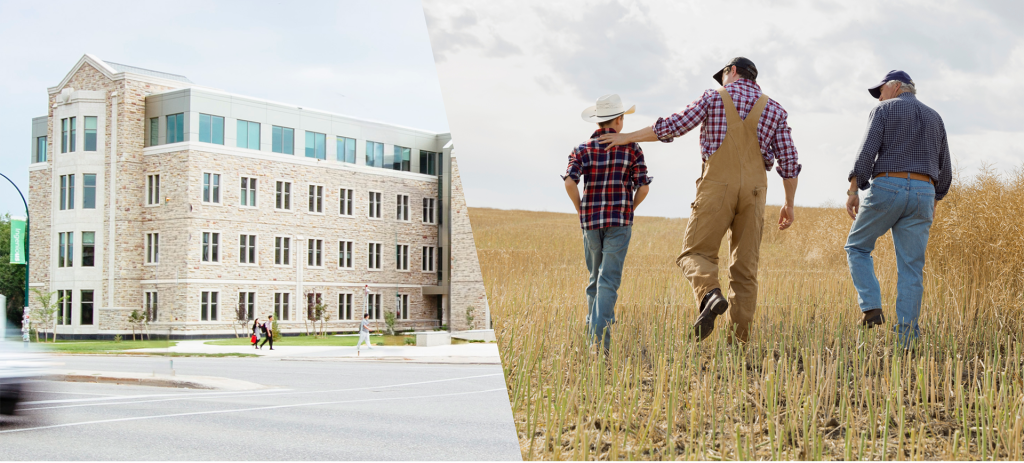The Canadian Centre for Rural and Agricultural Health (CCRAH) is a University of Saskatchewan research centre in Saskatchewan, Canada. We embody innovative research, dedicated outreach, and collaborative efforts to support people to live healthy and safe in rural and agricultural settings. We welcome collaborations that enhance rural peoples’ health and safety.
Community-driven research-to-action
CCRAH is a research centre dedicated to putting our boots on the ground alongside rural and agricultural people to address their health and safety needs. We accomplish this by working at the grassroots, in, for, and with the people and communities, undertaking research, developing resources, and delivering programmes and services in Saskatchewan and across Canada. Our partnerships with communities help us define research questions and drive innovation to address health challenges for rural and agricultural people. We mobilise knowledge and take the research evidence to where it’s needed through our community, industry, and academic partners.
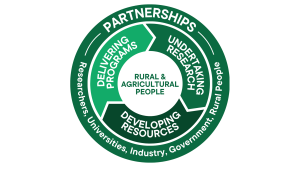
Community-based participatory research
CCRAH embeds rural people (e.g. farmers, ranchers, communities, Indigenous communities, industries, and municipalities) in a research-to-action cycle. Community members are involved in the entire process, from the development of research questions, actions, and movement of evidence into resources, programmes, and services.
Research infrastructure and capacity
Our research examines the links between rural and agricultural environments and health and safety outcomes. Where people live matters. World-class investigators are at the forefront of discovery in rural and agricultural health and safety. CCRAH has the infrastructural capacity to support and undertake rural health and safety research through specialised meeting and office spaces, and research laboratories. The infrastructure includes:
Rural Health and Agricultural Injury Control Laboratory
The Rural Health and Agricultural Injury Control Laboratory explores determinants of health (e.g. respiratory health, sleep health, mental health) and injury prevention. Those living in rural areas have health inequities and health access issues that differ from urban settings. Injuries in agricultural settings occur at a higher rate than that seen in most other occupations.
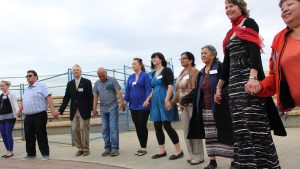
We have conducted large population-based studies among people living in rural and remote areas, farmers, non-farmers, and Indigenous peoples. Respiratory, sleep health, and injury research have been focal points, including rural occupational lung health studies (grain workers and farmers); longitudinal studies of rural people’s health; and longitudinal rural injury studies of farmers. The work has involved numerous partnerships, including a longstanding international collaboration with colleagues in Europe. Epidemiologic and biostatistical programmes, equipment, and technicians support the research.
Our respiratory lab allows for in-person and field testing of lung function, skin-prick testing, spirometers and home sleep testing devices. Projects include provincial rural health studies, First Nations health studies, and respiratory health studies.
Our epidemiology lab includes workstations to conduct remote data collection, store and manage data, and conduct analyses. Data sources include primary data collection and large administrative databases, clinical to population-based data as well as cross-sectional and longitudinal data. While much of our research within the epidemiology lab is based on investigations of respiratory health, we also have work focused on diabetes, cancer, mental health, and other conditions.
Omics Laboratory
The Omics Laboratory uses state-of-the-art mass spectrometry analytical instrumentation and molecular laboratory techniques for innovative research in proteomics, genomics, metabolomics, and lipidomics. This research applies to clinical, environmental, agricultural, rural and occupational health. The laboratory has the capacity for high-quality mass-spectrometry and PCR-based analyses. Equipment includes ddPCR, qPCR, and high-resolution mass spectrometers. We carry out analyses for sequencing, identification, and quantification of peptides, proteins, and antibodies, targeted and untargeted proteomics, metabolomics, lipidomics, and bioinformatics analyses.
The laboratory has a strong focus in the following research areas: identifying and validating biomarkers for diseases; elucidating the molecular pathways in disease pathogenesis; identifying novel drug targets, therapeutic agents, and diagnostic tests; environmental and agricultural analysis (e.g. pesticides); impact of occupational whole-body vibration on cognitive impairment; and bioinformatics tools to analyse and annotate the proteome, metabolome, and lipidome.
In partnership with Agilent Technologies, we are developing an innovative programme for mass spectrometry instrumentation that will enhance the capabilities of the laboratory to better serve academia, industry partners, and the community.
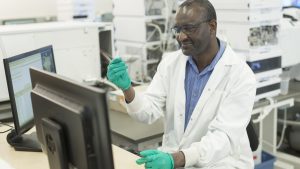
Occupational Hygiene and Environmental Exposure Laboratory
The Occupational Hygiene and Environmental Exposure Laboratory is dedicated to advancing worker health and wellness through the anticipation, recognition, evaluation, and control of workplace and environmental hazards. The lab has the capacity to measure and evaluate exposure to a wide range of hazards, including chemical, physical (heat, noise, vibration, and radiation), biologic, and ergonomic hazards. The lab has direct reading instrumentation and indirect measurement capacities for all types of hazards. The facility also has both a human exposure laboratory and an animal exposure laboratory. Longstanding research has focused on assessment and control of agricultural worker respiratory exposures including dusts, endotoxin, bioaerosols, and antimicrobial-resistant genes. Recent work has focused on ventilation and health, including viruses and the role of ventilation and carbon dioxide in health outcomes.
Biomechanics and Ergonomics Laboratory
The Biomechanics and Ergonomics Laboratory enables groundbreaking research into musculoskeletal health, ergonomics, and human movement. The lab is equipped with optical motion capture, inertial measurement units, electromyography, force plate and force cubes, in-field ergonomic tools, and an innovative rotopod for simulation of vibration exposures in-lab.
The mission of the Biomechanics and Ergonomics Laboratory is to improve musculoskeletal health and quality of life of rural people around the world, but with a focus on Saskatchewan. Our goal is to understand how movement and biomechanics are related to injury, musculoskeletal health, and work. The overall intended contribution of the lab is to improve health through enhanced understanding of biomechanical exposures and application of ergonomic, return-to-work, and rehabilitation interventions.
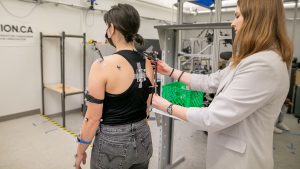
Ongoing projects towards these goals have wide-reaching objectives. Recent research has examined the influence of rural residence on shoulder biomechanics of people with shoulder pain, defined shoulder movement patterns during in-field assessment of work tasks in farmers, and assessed postural exposures experienced by a range of workers at a northern mine site. Current work includes exploration of post-treatment upper limb dysfunction in breast cancer survivors, prospective investigation into the role biomechanics play in the development of shoulder injuries, and collaborations with clinical researchers to understand the long-term biomechanical effects of orthopaedic surgeries.
Rural Dementia Laboratory
Two major dementia care initiatives serving rural people have been integrated into the provincial health system, one a specialist service and the other a primary care service. A third focus is nutrition strategies to support healthy living among older adults.
The specialist Rural and Remote Memory Clinic is an interdisciplinary diagnostic and management service for atypical and complex cases of suspected dementia. The clinic streamlines specialist diagnosis and care recommendations to a one-day appointment, reducing repeated travel, shortening time to diagnosis, and facilitating access to other services such as the Alzheimer Society.
Primary care memory clinics are supported by researchers at CCRAH and operate in ten rural communities, saving travel and reducing specialist wait times. The memory clinics are led by local primary healthcare teams, providing early diagnosis and ongoing management. Patients and families benefit from the comfort and convenience of local memory services. More than 1,100 patients and caregivers have benefited from our specialist and rural-based primary healthcare memory clinics.
The Cognitive Kitchen is an evidence-based culinary and nutrition programme, offering education and social support to help people to maintain health at home. The six-part series is offered virtually for older adults and care partners of people living with dementia. Each session includes a hands-on preparation component and discussion of strategies to support risk reduction and living well with dementia.
Rural Access to Care
Access is a multidimensional concept that can be defined as the opportunity to have healthcare needs fulfilled. Diverse populations experience health challenges and access to care differently for a variety of reasons, such as culture, location, and other social and economic factors. Research is focused on understanding root causes, barriers, and challenges of health conditions in rural and remote communities and finding unique and innovative solutions to improve access to healthcare services. Remote presence health provision research and training is rapidly expanding as an important resource to support people. A new mobile unit expands our mobile health screening services for rural Saskatchewan.
One area of focus is musculoskeletal health and access to non-pharmacological management and services. Musculoskeletal conditions, including chronic back pain, impair quality of life, and place economic burden on individuals, communities, and the healthcare system. Virtual care services and programming help provide virtual physiotherapy and rehabilitation to Indigenous communities, connecting patients and families hundreds of kilometres away from health providers with care.
Health and Safety Outreach Laboratory
Focused on moving the research evidence into resources, programmes, and services to support rural people, the Health and Safety Outreach Laboratory has the capacity for population assessments and training for common exposures (noise, respiratory, chemical, etc.). Equipment and tools in the lab include portable and volumetric spirometers, quantitative mask fit testing equipment, portable audiometer, audiometric booth, health screening equipment, hearing protection fit testing equipment, display settings for resource distribution, and confidential medical file storage capacity. Programming is offered to over 21,000 rural Saskatchewan residents through our Agricultural Health and Safety Network, and across Canada and worldwide through our partnerships.
A communications laboratory has tele-transmission capacity for members to collaborate with partners anywhere in the world, as well as for integrated communications and sharing. We have also implemented a modern communications strategy to improve our visibility both in-person and virtually.
Commercialization and Innovation Laboratory
The Commercialization and Innovation Laboratory provides opportunities for private sector personnel to work in collaboration to effect seamless transition between knowledge development and commercial activity, including developing and testing potential products and services for the health and safety of rural people. This lab is also the home of CCRAH’s CANWORKSAFE® programme that provides occupational health services for agriculture and related industries.
Strength in partnerships
For over 40 years, CCRAH has formed a strong interdisciplinary community dedicated to research, service, and knowledge mobilisation. We are experts in rural and agricultural health. From our base in Saskatchewan, Canada, we have a unique perspective to understand and address the health and safety needs of rural people. Saskatchewan is the ultimate rural experience; at almost double the size of Germany, the population is over 60 times lower (1.5 %). Solutions developed and tested to improve the health and safety of rural people in Saskatchewan can easily be applied elsewhere in the world.
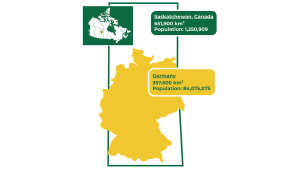
We have a 35-year partnership with Saskatchewan’s rural municipalities. Unique in the world, this partnership between individual municipalities and CCRAH is our grassroots connection to the people of Saskatchewan, as mentioned by Ray Orb, Former President of the Saskatchewan Association of Rural Municipalities:
Branching out from these grassroots connections, we have built local, national and international partnerships to stimulate innovation and action for the health and safety of rural people:
International, national and local academics
Rural-based industries (e.g. mining, agriculture, healthcare)
Indigenous communities
Municipal, Provincial, and Federal Governments
Rural communities and organisations
Organisations dedicated to rural safety, health and wellness
Conclusion
The ever-changing landscape of rural life requires innovative and adaptable solutions from interdisciplinary teams drawing from an international perspective. Partnerships and collaborations are fundamental to the CCRAH’s success, impact, and ability to drive change. We look forward to developing new partnerships with academics, research institutions, and industry. We believe collaborative opportunities can only further enhance the health and safety of rural and agricultural peoples worldwide.
Please note, this article will also appear in the 22nd edition of our quarterly publication.
Source link

